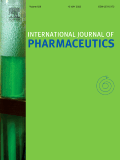
“Cannabidiol (CBD) is a non-psychoactive plant cannabinoid that inhibits cell proliferation and induces cell death of cancer cells and activated immune cells.
Here, we studied the effects of CBD on various mitochondrial functions in BV-2 microglial cells.
Our findings indicate that CBD treatment leads to a biphasic increase in intracellular calcium levels and to changes in mitochondrial function and morphology leading to cell death.
Single-channel recordings of the outer-mitochondrial membrane protein, the voltage-dependent anion channel 1 (VDAC1) functioning in cell energy, metabolic homeostasis and apoptosis revealed that CBD markedly decreases channel conductance.
Finally, using microscale thermophoresis, we showed a direct interaction between purified fluorescently labeled VDAC1 and CBD.
Thus, VDAC1 seems to serve as a novel mitochondrial target for CBD.
The inhibition of VDAC1 by CBD may be responsible for the immunosuppressive and anticancer effects of CBD.”
https://www.ncbi.nlm.nih.gov/pubmed/24309936
“The non-psychoactive plant cannabinoid, cannabidiol (CBD), alone has strong anti-inflammatory and immunosuppressive effects in diverse animal models of disease such as diabetes, cancer, rheumatoid arthritis and multiple sclerosis. In addition, CBD has been reported to have anxiolytic, antiemetic and antipsychotic effects. Moreover, CBD has been shown to possess antitumor activity in human breast carcinoma and to effectively reduce primary tumor mass, as well as size and number of lung metastasis in preclinical animal models of breast cancer.”
https://www.ncbi.nlm.nih.gov/pmc/articles/PMC3877544/
“In summary, in this study we have identified VDAC1 as a new molecular target for CBD. Our study suggests that CBD-induced cell death may occur through the inhibition of VDAC1 conductance and that this interaction may be responsible for the anticancer and immunosuppressive properties of CBD.”
https://www.nature.com/articles/cddis2013471
“Voltage-Dependent Anion Channel 1 As an Emerging Drug Target for Novel Anti-CancerTherapeutics.” https://www.ncbi.nlm.nih.gov/pubmed/28824871
“Finally, small molecules targeting VDAC1 can induce apoptosis. VDAC1 can thus be considered as standing at the crossroads between mitochondrial metabolite transport and apoptosis and hence represents an emerging cancer drug target.” https://www.ncbi.nlm.nih.gov/pubmed/25448878










